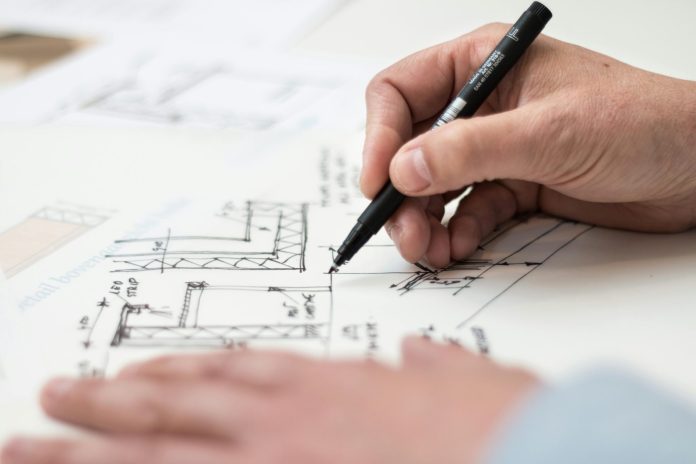Precision isn’t just a nice-to-have in custom home building—it’s absolutely essential. Unlike volume building where repetition allows for predictable timelines and costs, custom projects come with their own unique complexities. Every site, client brief, and design element introduces variables that must be carefully managed to avoid delays, disputes, and budget blowouts.
Whether you’re working with first-home buyers or clients building their dream forever home, accuracy at every stage of the project—from design to delivery—is key to maintaining a solid reputation and turning a profit.
Understanding the Brief from Day One
Custom homes start with a vision, and often, that vision is full of personal touches and non-standard inclusions. The first step in building with precision is to fully understand the client’s goals, expectations, and non-negotiables.
Spending extra time during the consultation phase helps avoid miscommunication later. Ask detailed questions about materials, energy efficiency goals, lifestyle needs, and future plans for the property. Even things like future pool installations or room extensions can affect site layout or foundation decisions.
Getting it right from the outset avoids scope creep and ensures everyone is aligned before the first shovel hits the ground.
Site Analysis and Planning
Every block comes with its own set of challenges—sloping land, drainage issues, soil classification, or access constraints. Custom home builders need to work closely with surveyors and engineers to identify potential site limitations early on and incorporate them into the design.
Taking the time to assess these factors means you can prepare accurate siteworks estimates, anticipate costs for retaining walls or excavation, and avoid costly surprises mid-build. A well-informed site plan also allows you to schedule trades more effectively and prevent delays caused by unforeseen access issues.
Material Selections and Supplier Coordination
Unlike standard builds, custom homes often involve specific finishes, one-off fixtures, and special-order items. Precision here means locking in selections early and ensuring suppliers can meet the timeline.
Clear documentation of selections is crucial—clients often change their minds, and without a signed-off schedule of finishes, it can be difficult to track revisions. It’s equally important to communicate realistic lead times for custom or imported items and build in buffer periods for delivery.
Maintaining a tight handle on selections also helps keep the budget on track, especially when working with clients who are inclined to upgrade as they go.
Accurate Budgeting from the Start
When it comes to budgeting, guesswork is risky. Estimating custom builds accurately requires a detailed understanding of both material costs and labour requirements. This is where digital tools have become especially valuable.
Using dedicated platforms like construction estimating software Australia builders can create itemised, location-specific estimates that reflect current market conditions. These systems also make it easier to adjust budgets when changes occur, rather than manually reworking spreadsheets or relying on ballpark figures.
The right tools not only improve accuracy but also speed up the quoting process, giving clients a faster turnaround and a clearer picture of what their custom build will actually cost.
Scheduling for Realistic Timelines
Custom homes take longer to build than project homes—it’s just a fact. But delays can be reduced with a realistic, well-structured schedule. That means factoring in lead times for approvals, ordering, weather conditions, and potential design changes.
Software can help here too, with project management platforms that offer Gantt charts, task allocations, and alerts when timelines shift. These systems allow builders to track progress, notify trades of schedule changes, and keep clients in the loop with regular updates.
Keeping everyone aligned with a shared schedule reduces downtime and helps prevent the domino effect of one late delivery causing weeks of delay.
Managing Client Expectations Along the Way
Even when you do everything right, clients can get nervous, especially when things don’t appear to be moving quickly on site. Transparent, consistent communication is vital in building trust and keeping expectations realistic.
Set up regular check-ins—whether it’s weekly emails, site meetings, or progress photos—to keep clients engaged and informed. If a variation or delay does arise, bring solutions to the table quickly. People are more understanding when they feel they’re being kept in the loop.
Managing expectations isn’t just about avoiding complaints—it’s about delivering a great experience that leads to referrals and repeat business.
Quality Checks Throughout the Build
Precision isn’t just about the plan—it’s about execution too. Quality control should be ongoing, not just something saved for final inspection. Regular site walkthroughs, checklists for each stage, and accountability from trades help catch issues early.
Encouraging trades to flag concerns or highlight buildability issues before they become problems saves time and money down the line. It also contributes to a more collaborative, quality-focused culture on site.
Final Thoughts
Custom home building isn’t the easiest path, but for those who do it well, it’s one of the most rewarding. Delivering a bespoke home with precision builds a reputation for excellence and sets you apart in a competitive market.
From clear client communication to leveraging tools like construction estimating software Australia, every element of the process plays a part in delivering accuracy. And when everything runs smoothly, clients don’t just get a house—they get a home that matches their vision, down to the last detail.



 Bitcoin
Bitcoin  Ethereum
Ethereum  Tether
Tether  XRP
XRP  Solana
Solana  USDC
USDC  Lido Staked Ether
Lido Staked Ether  TRON
TRON  Cardano
Cardano  Avalanche
Avalanche  Toncoin
Toncoin